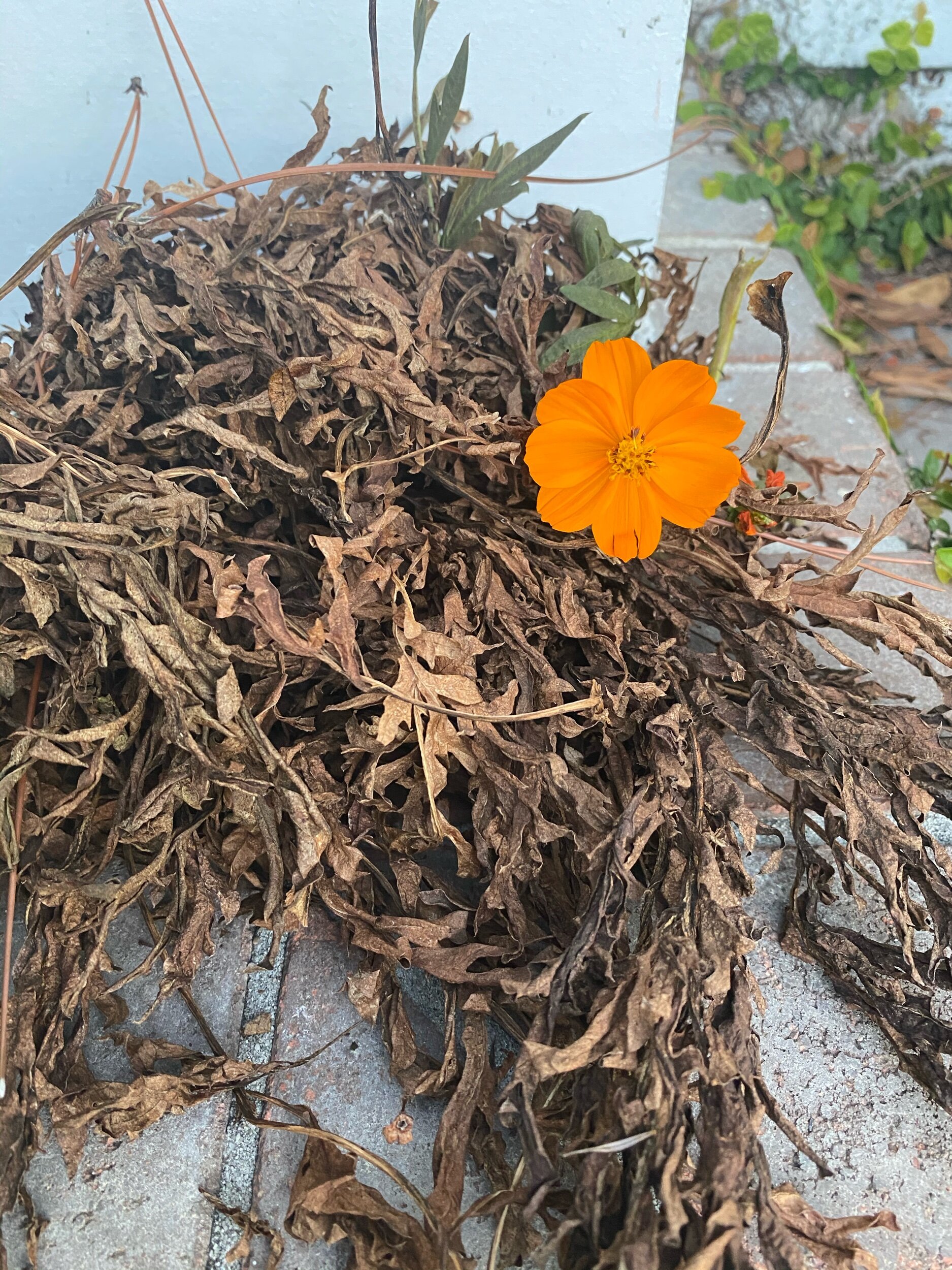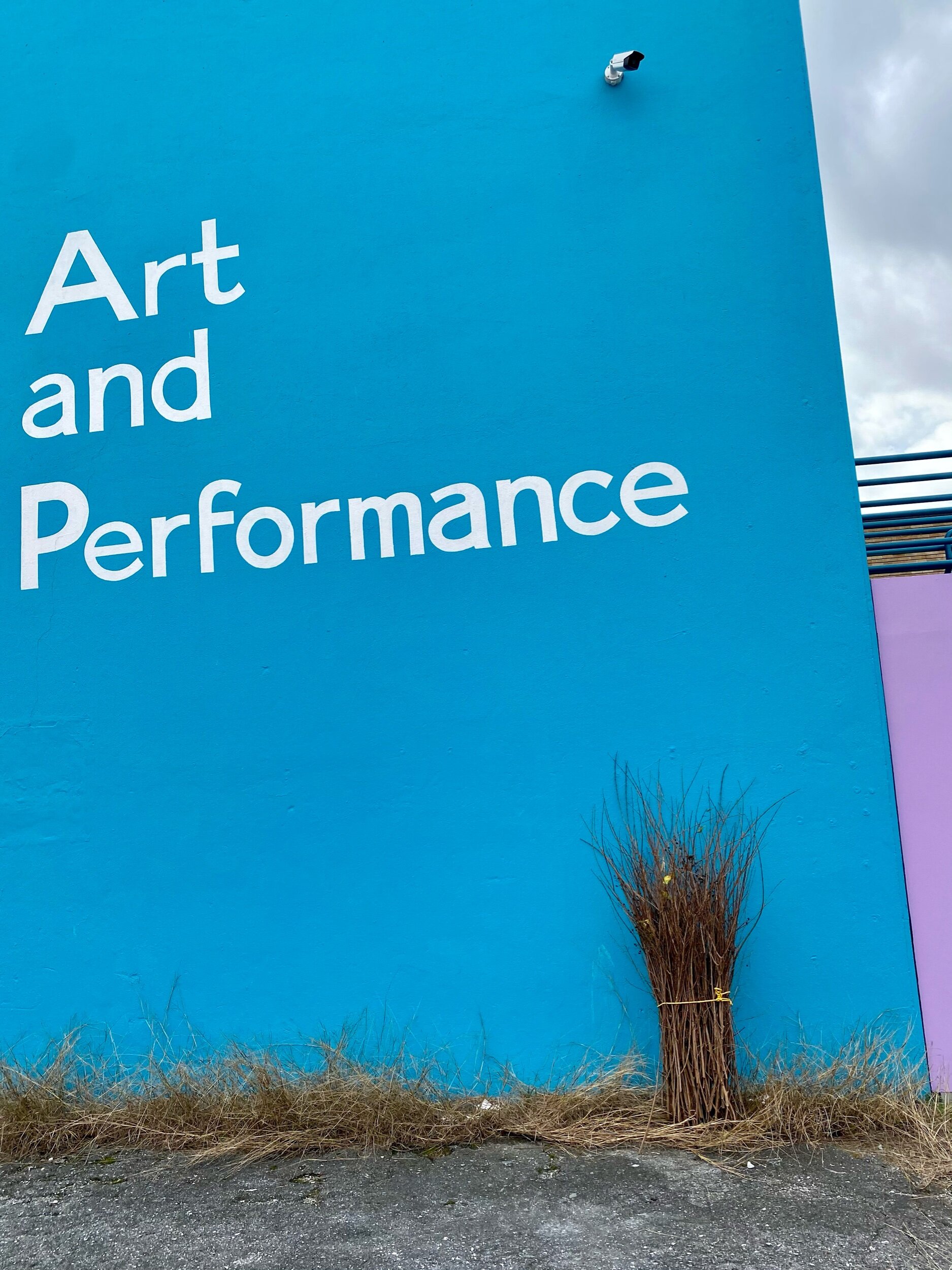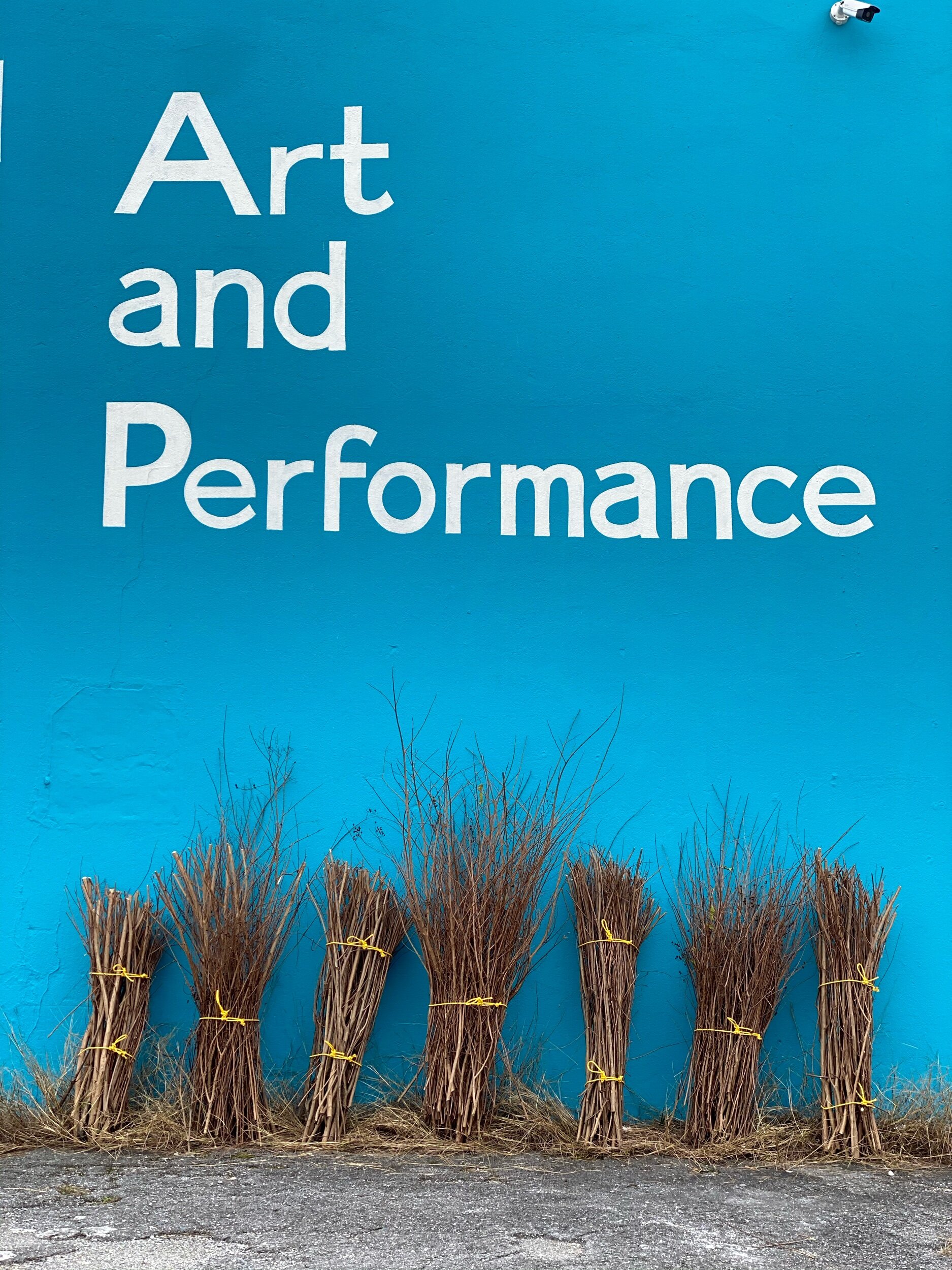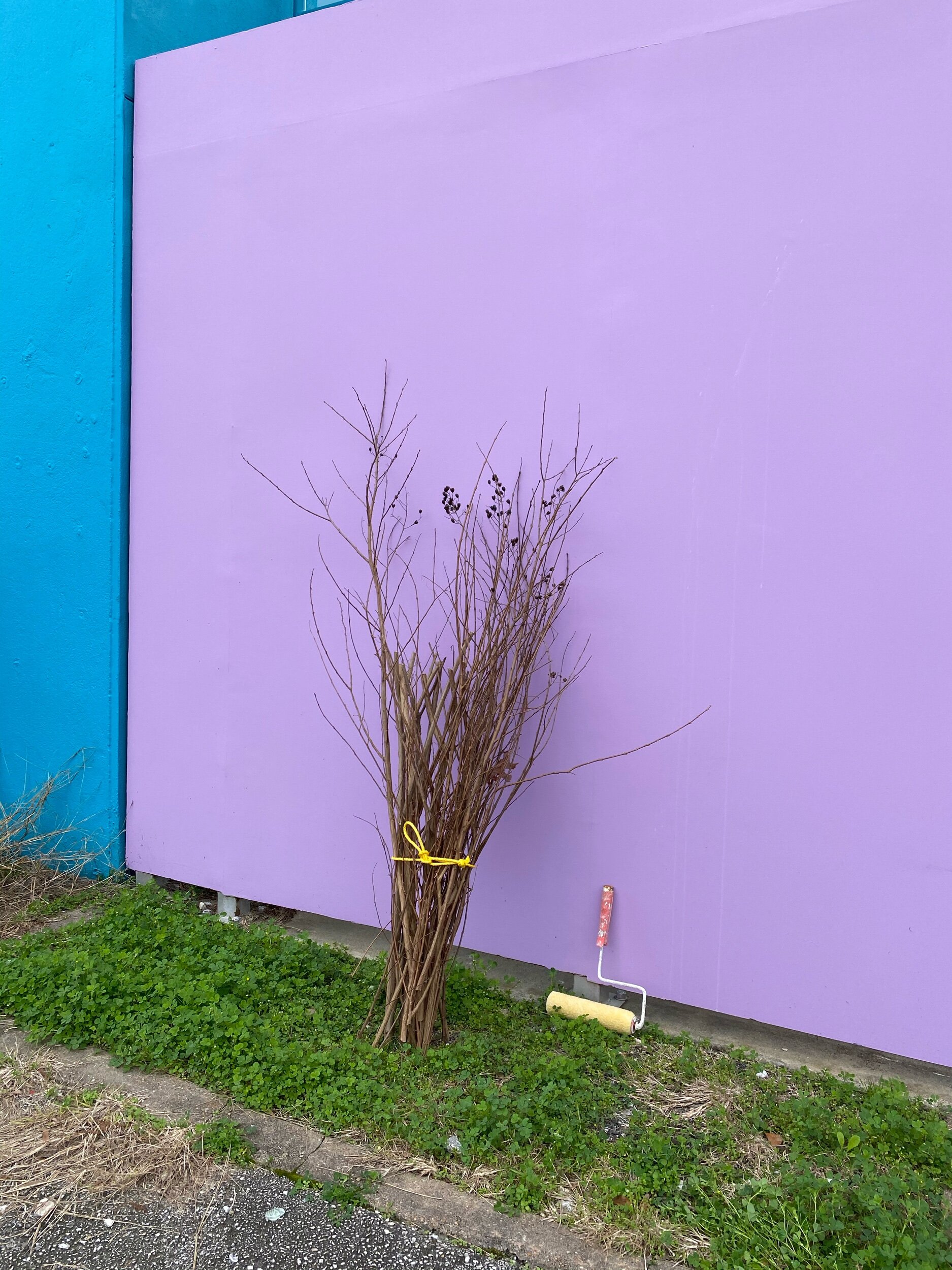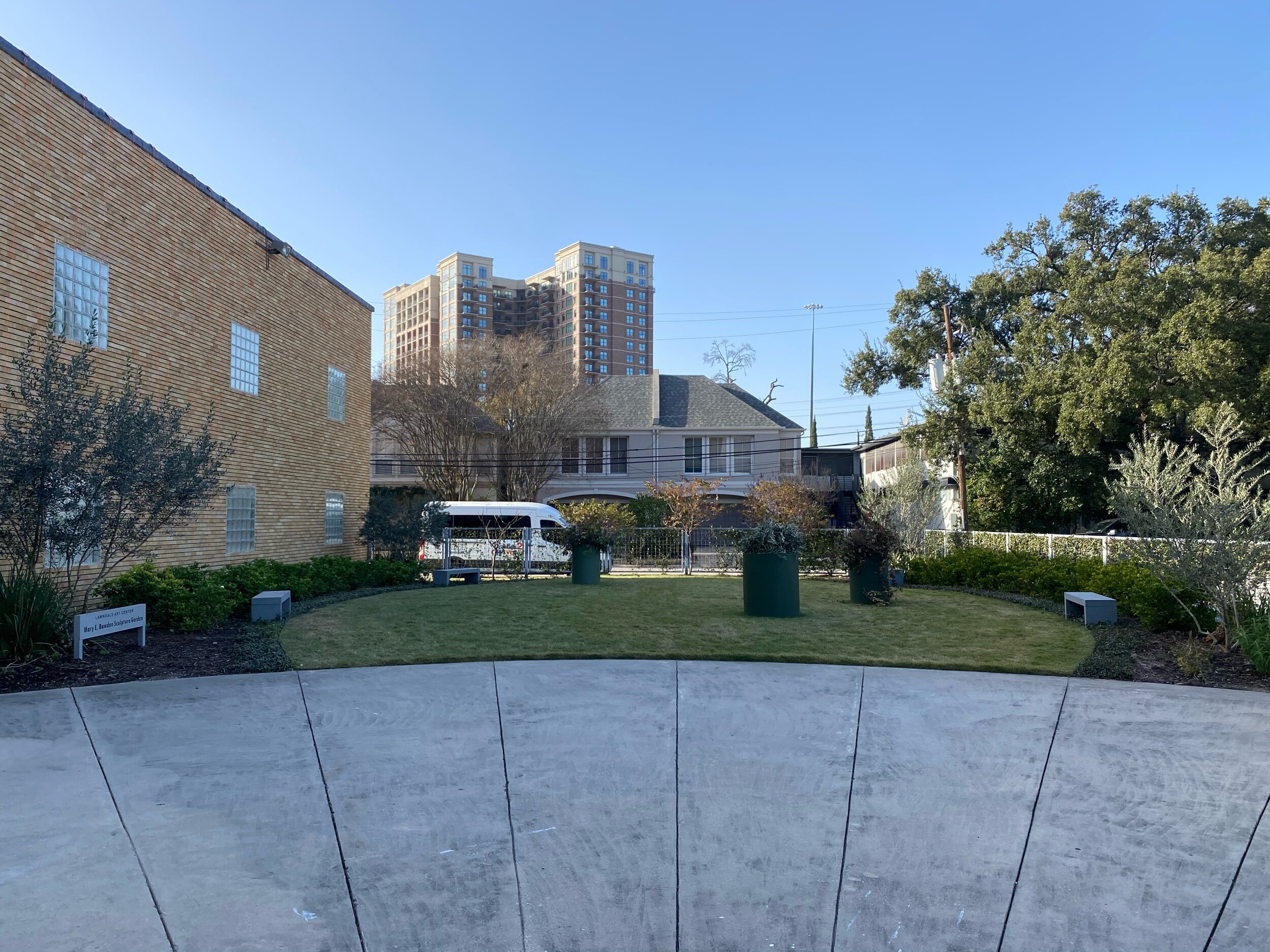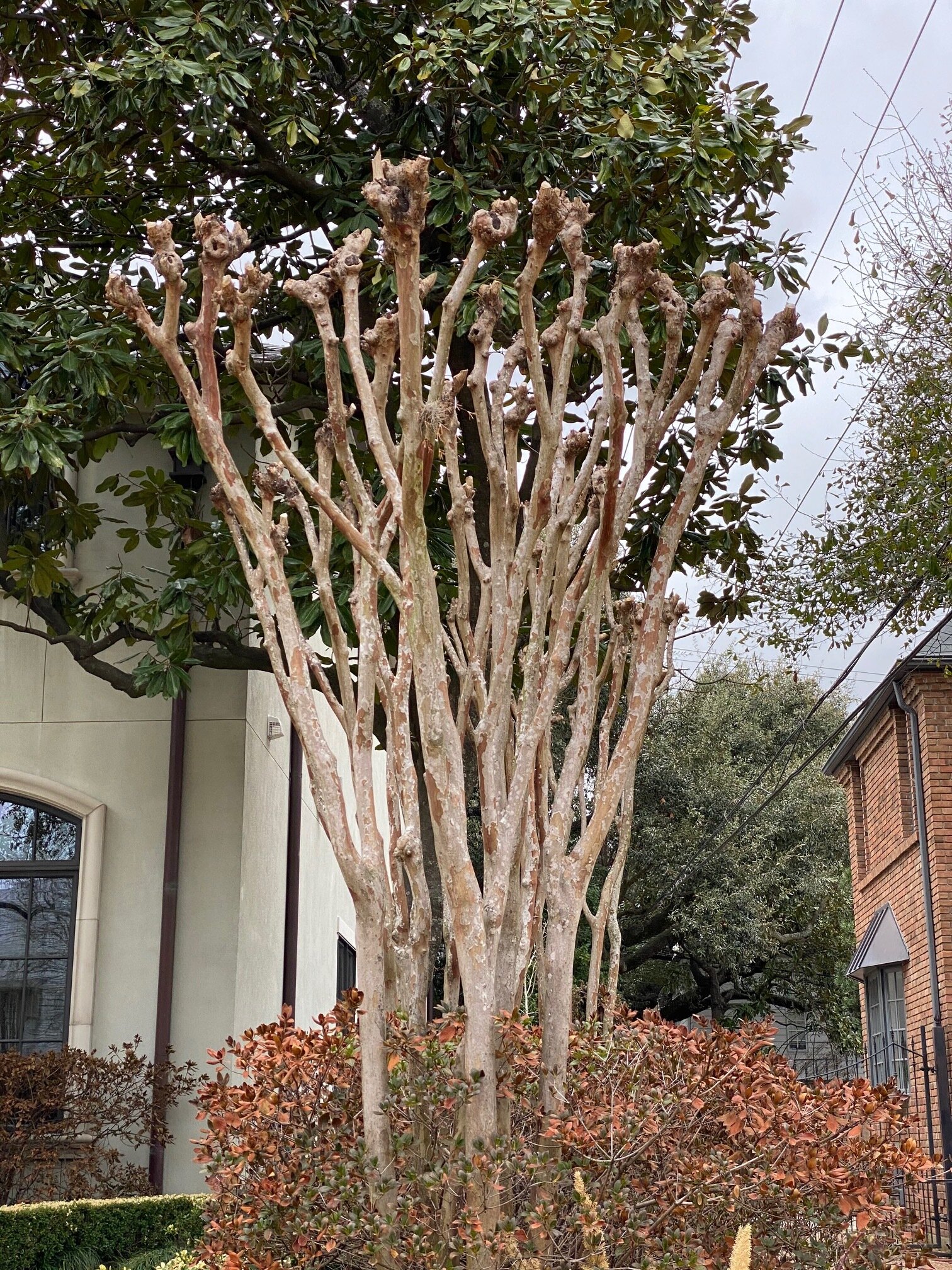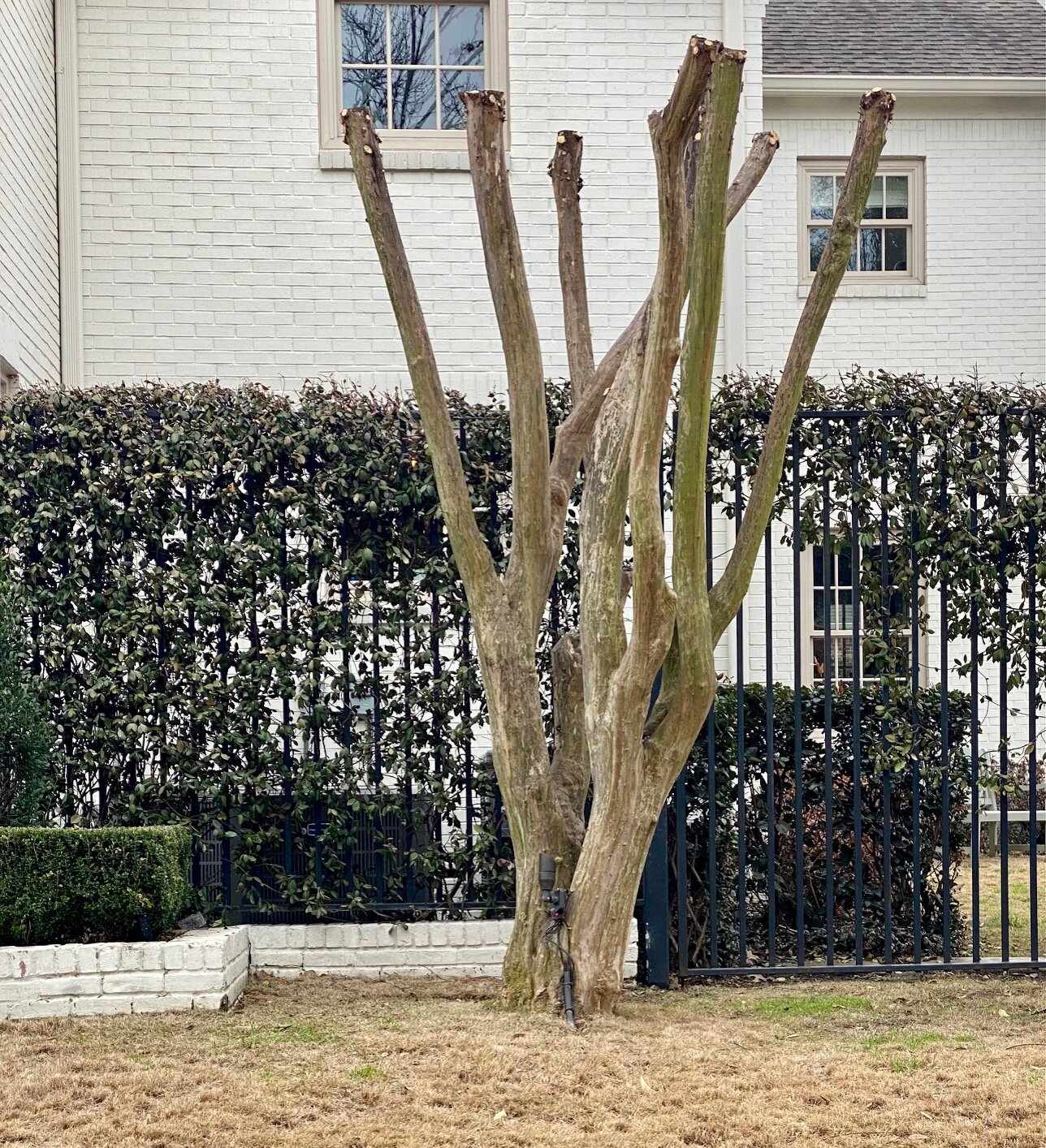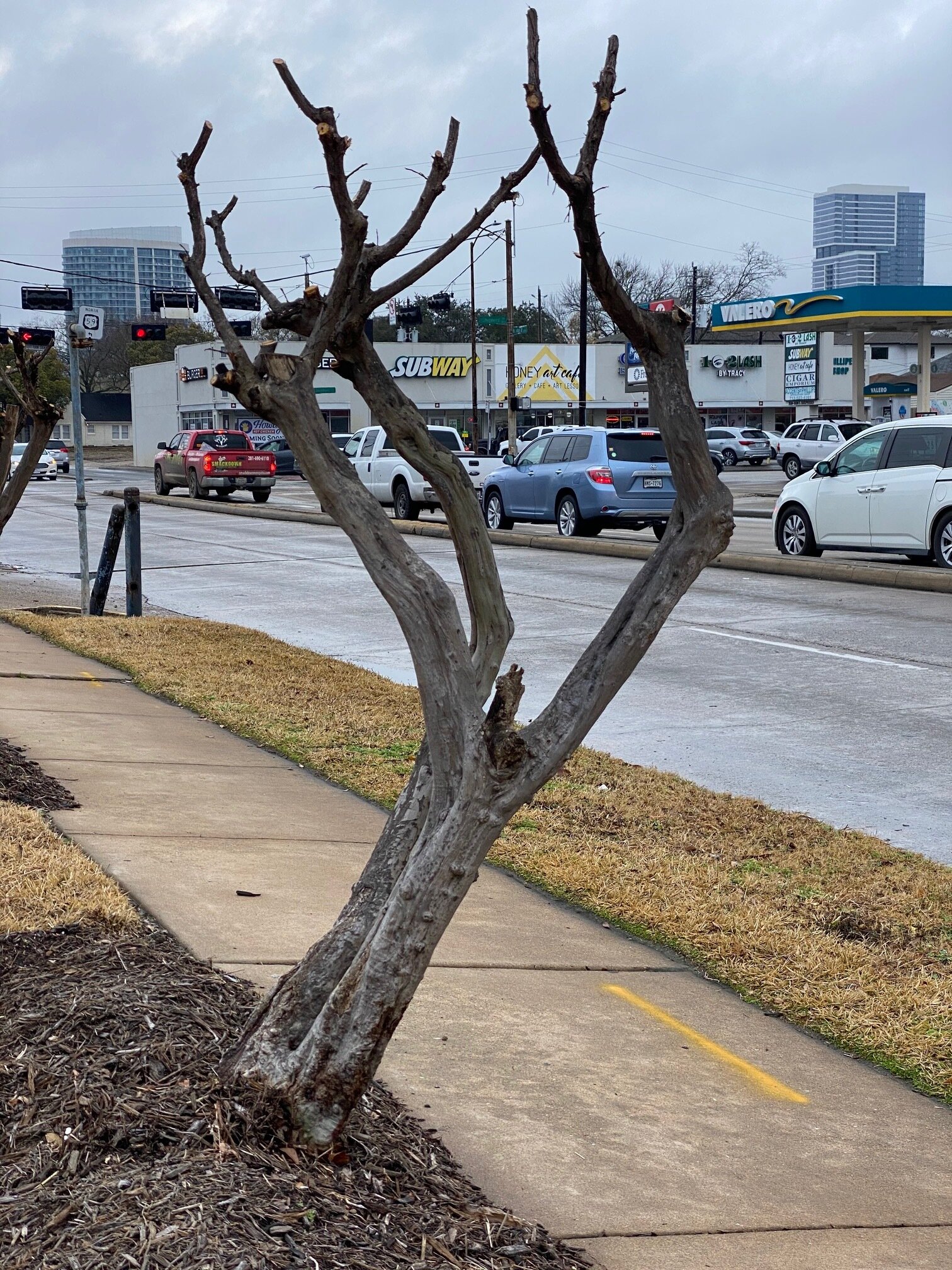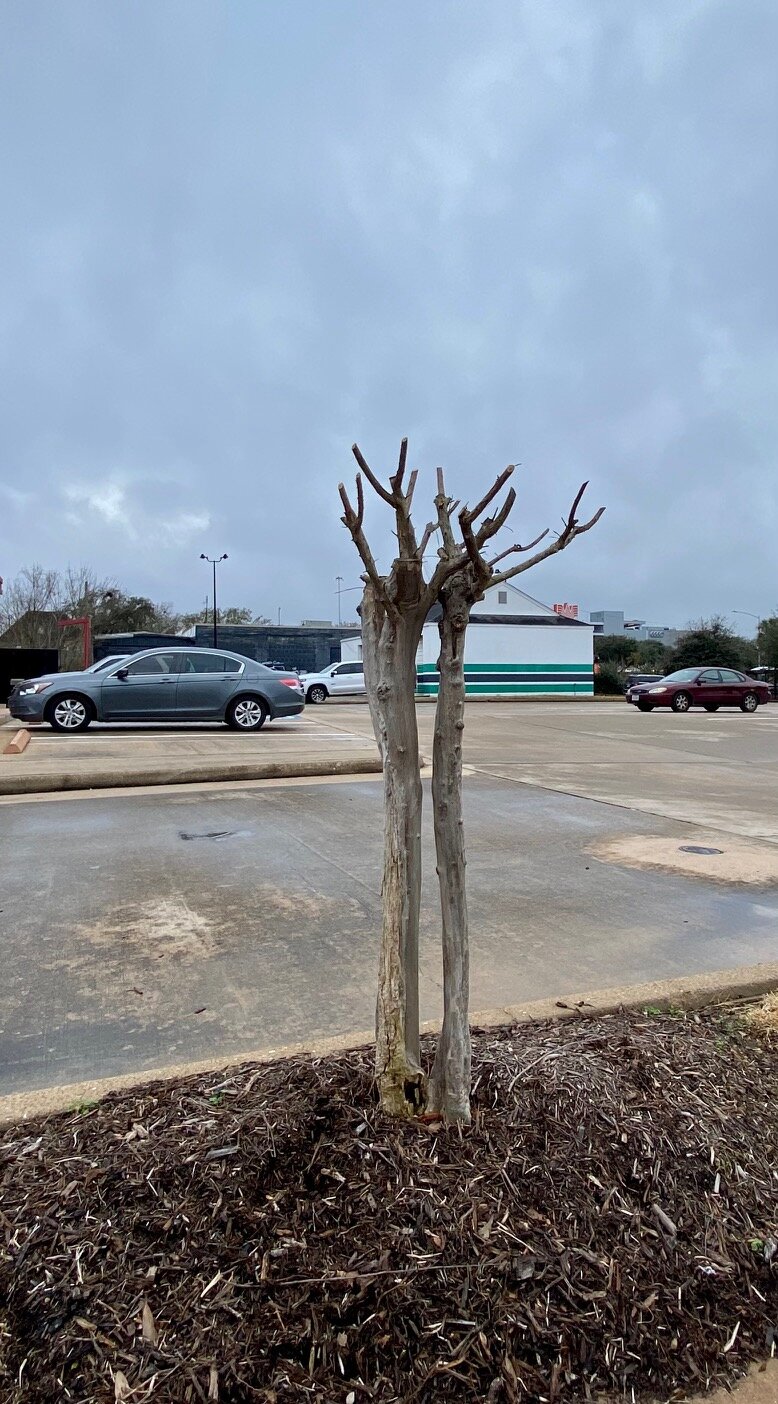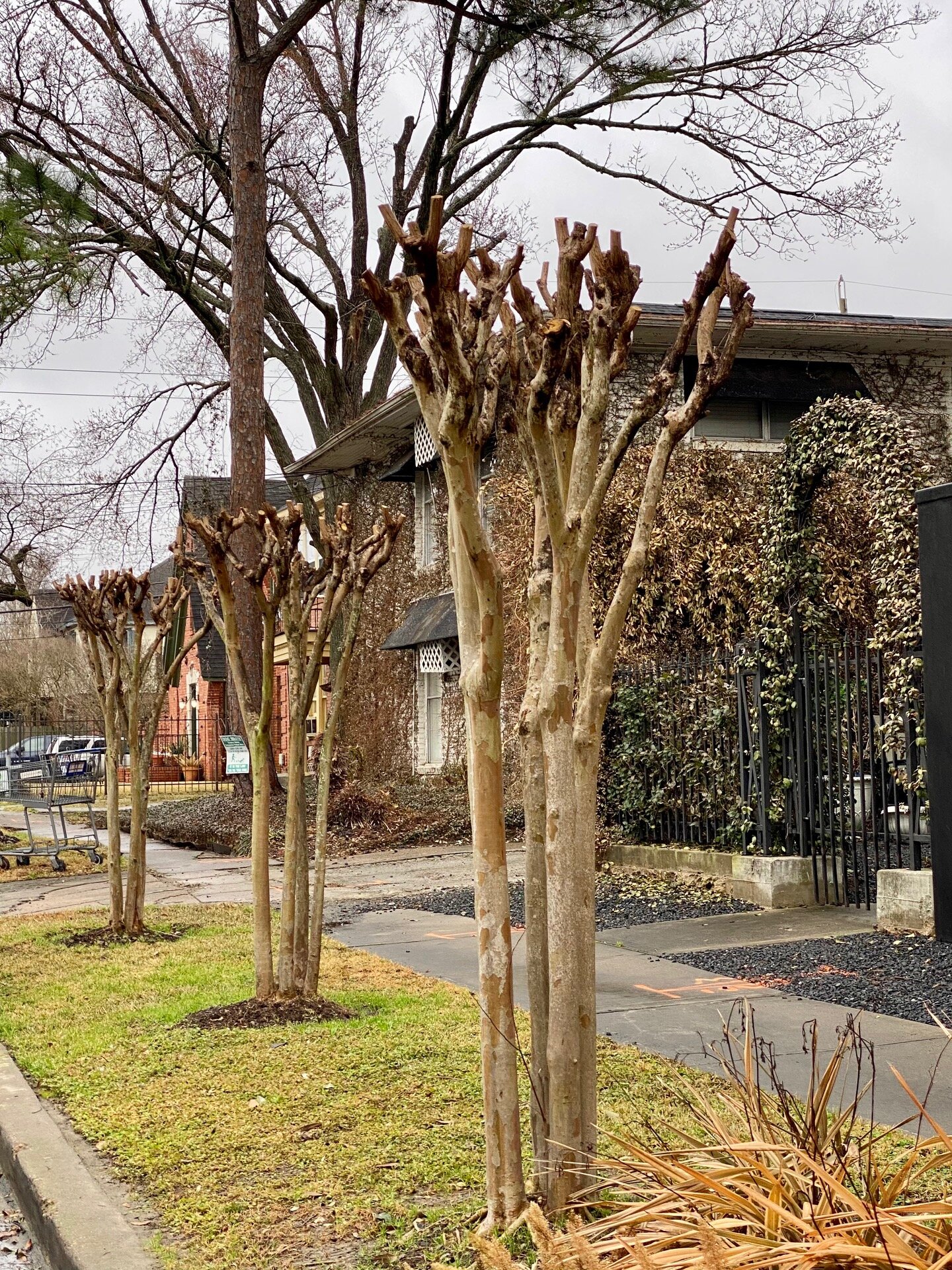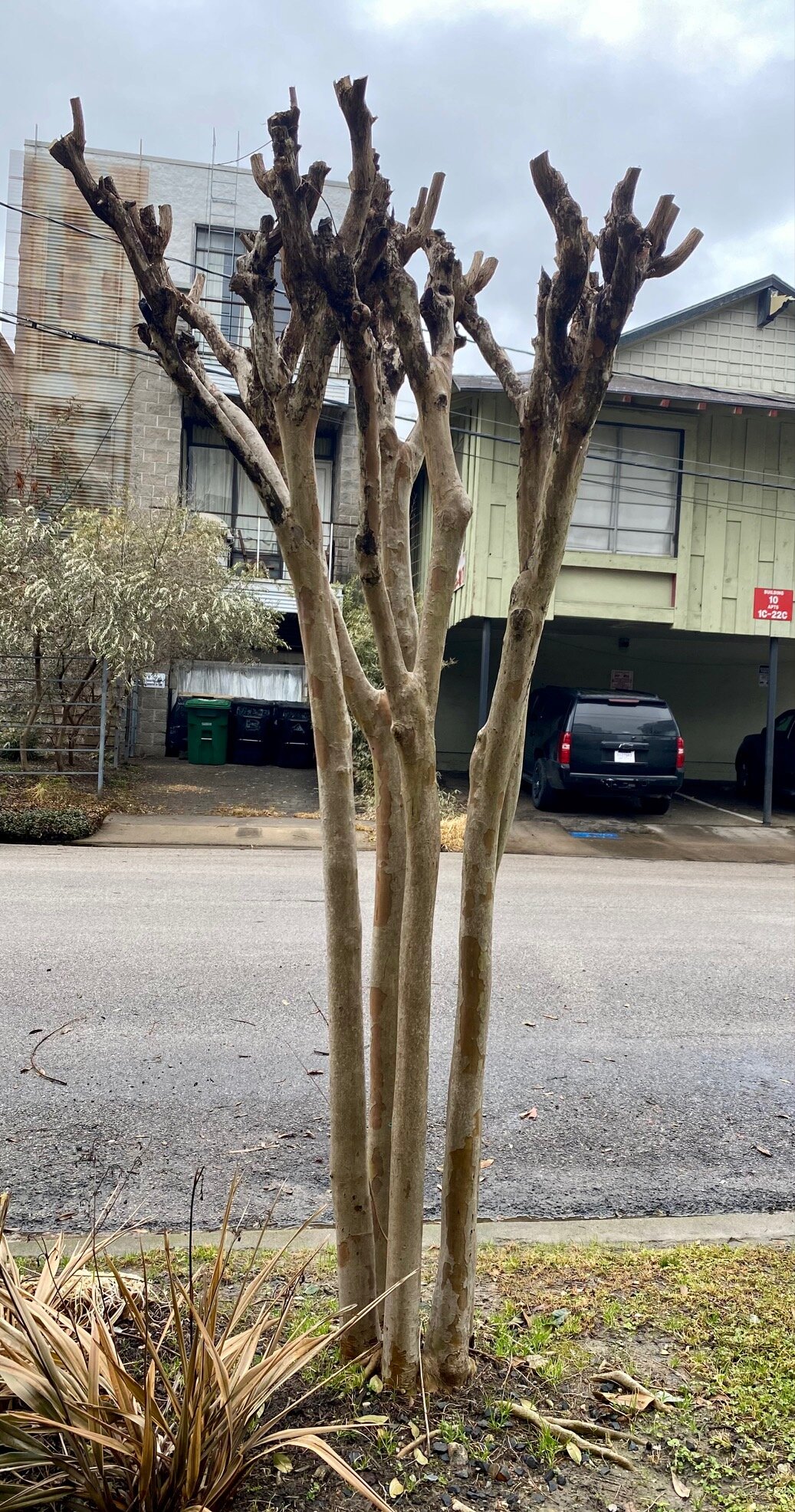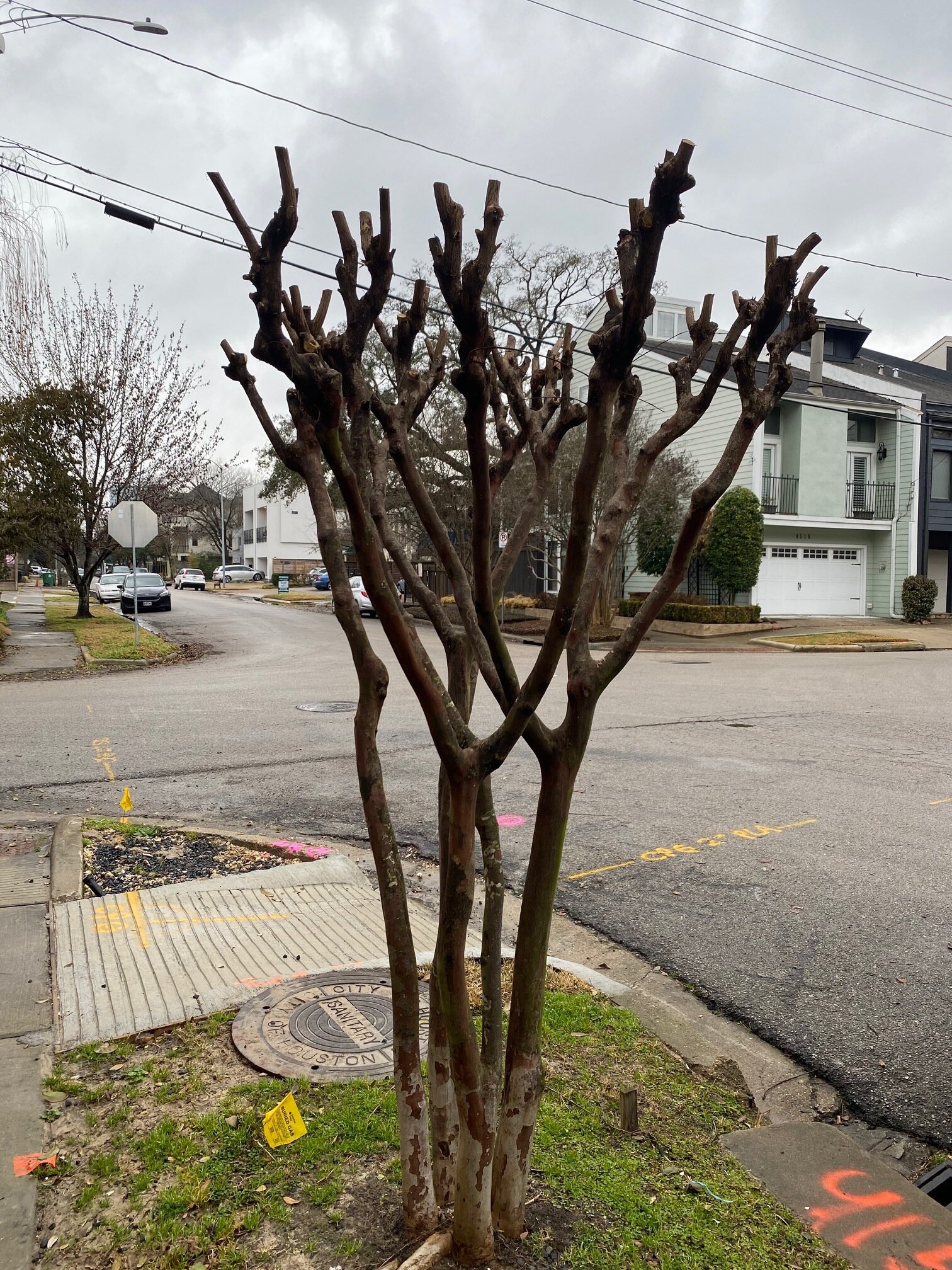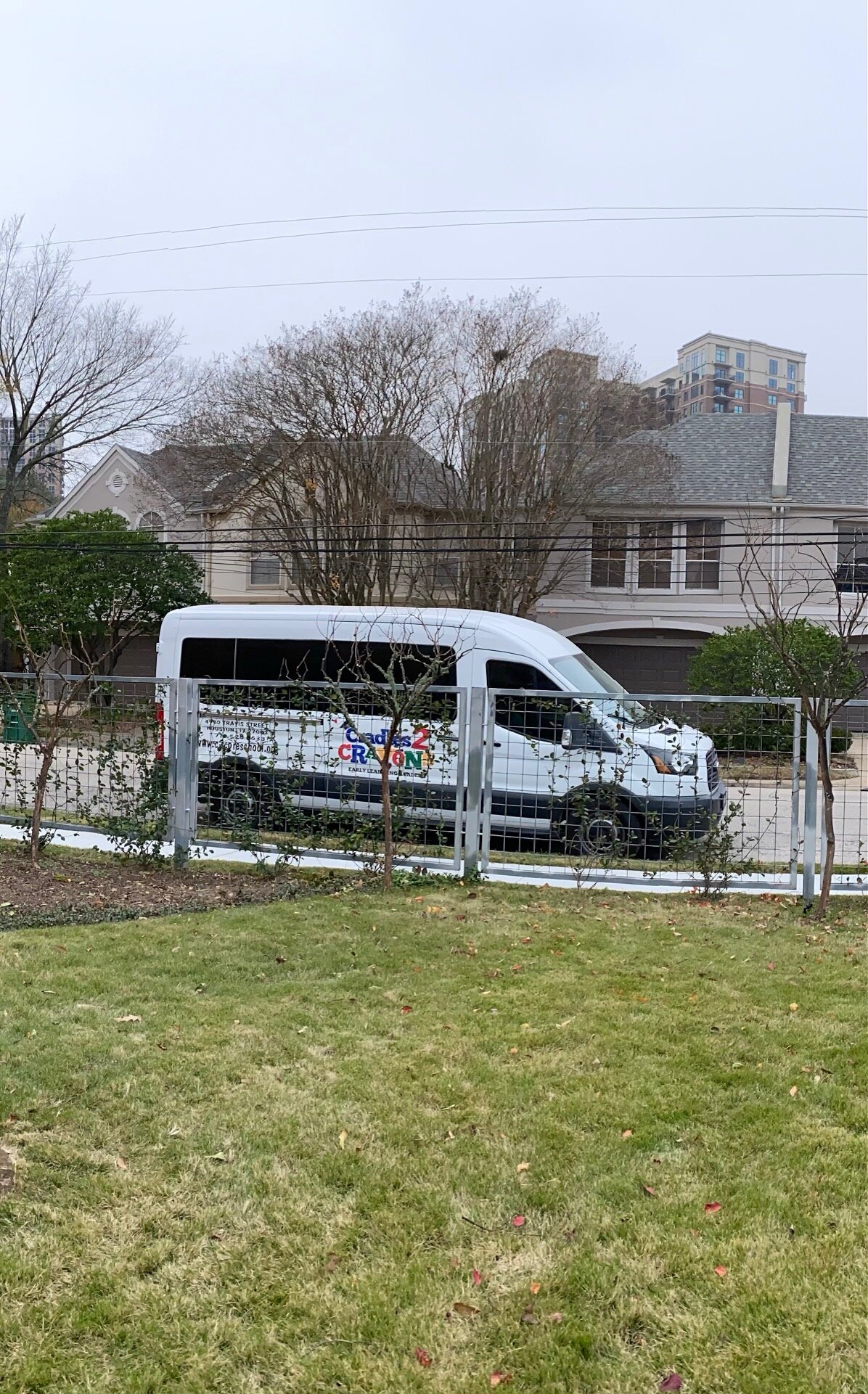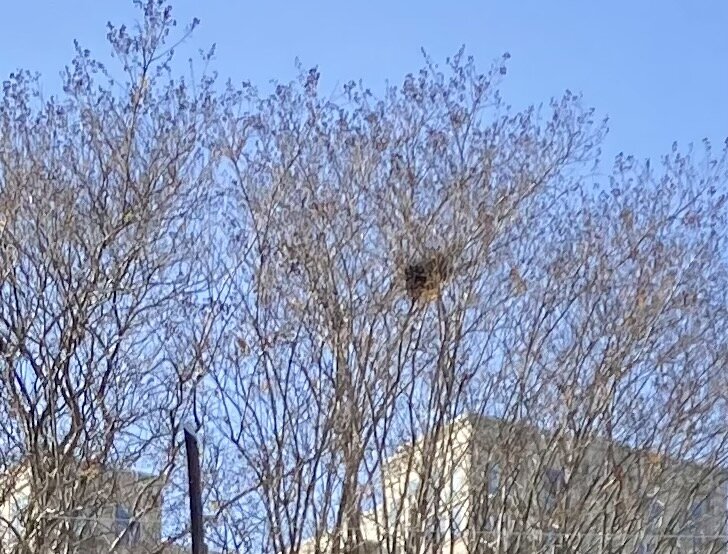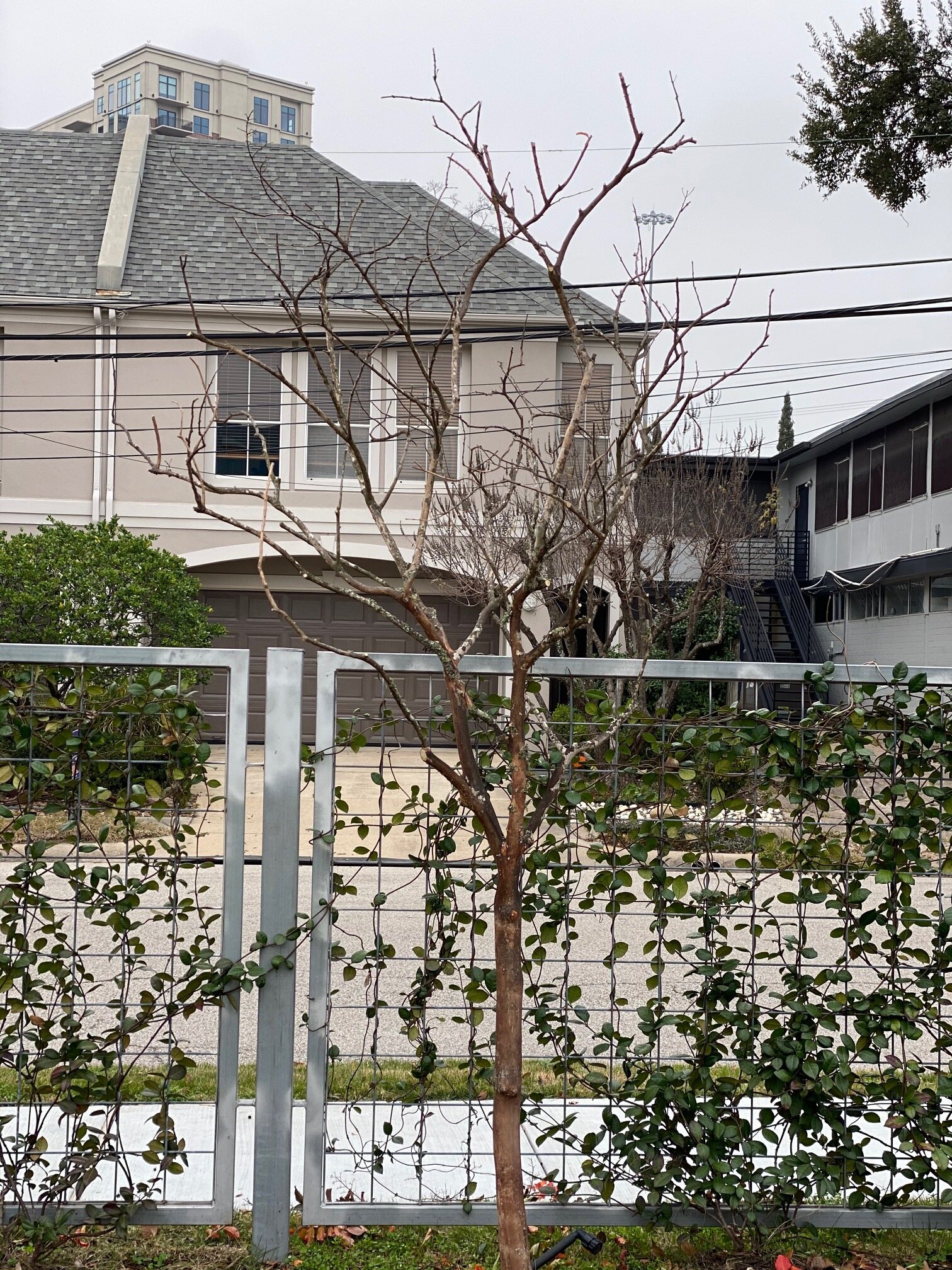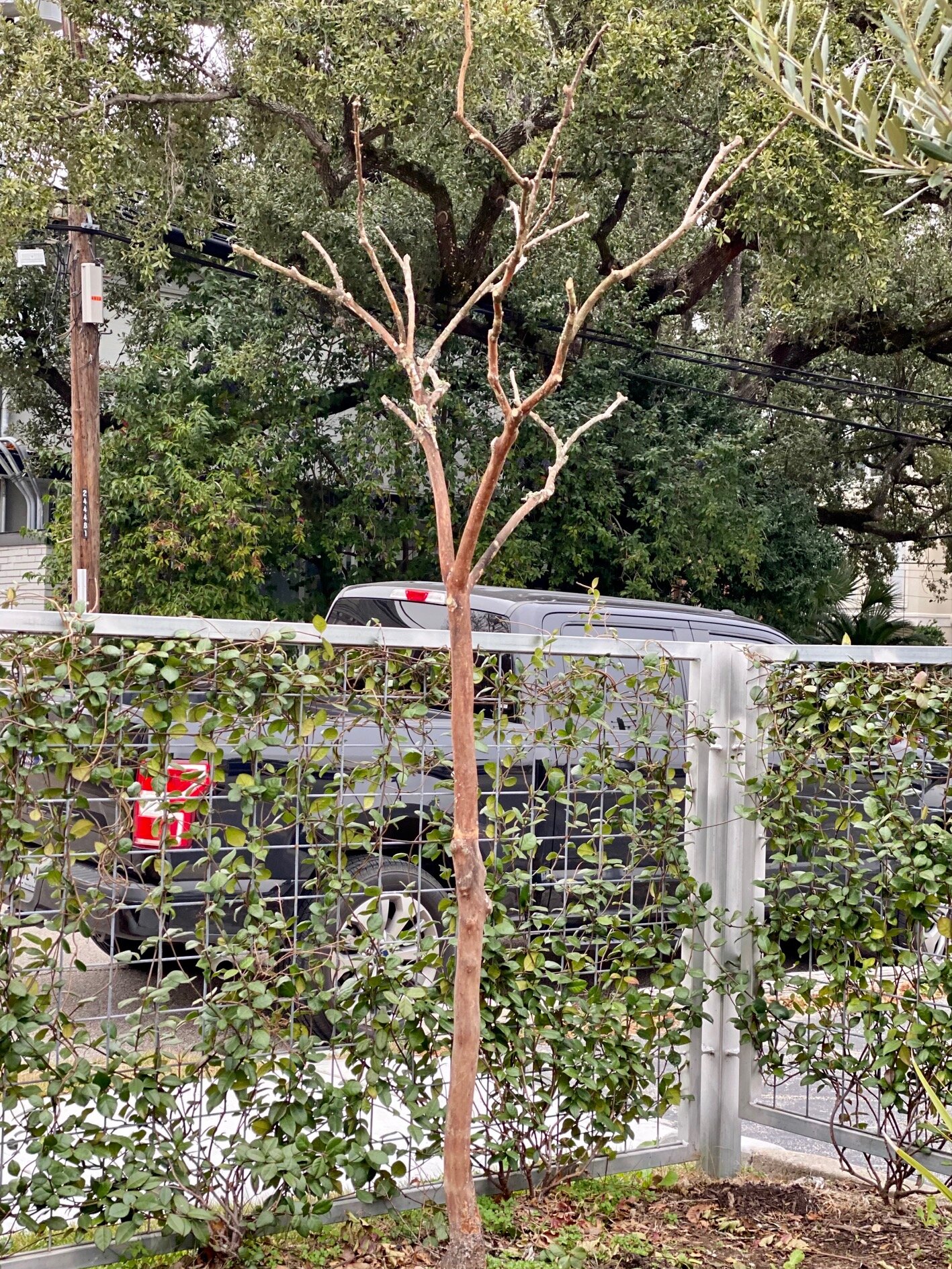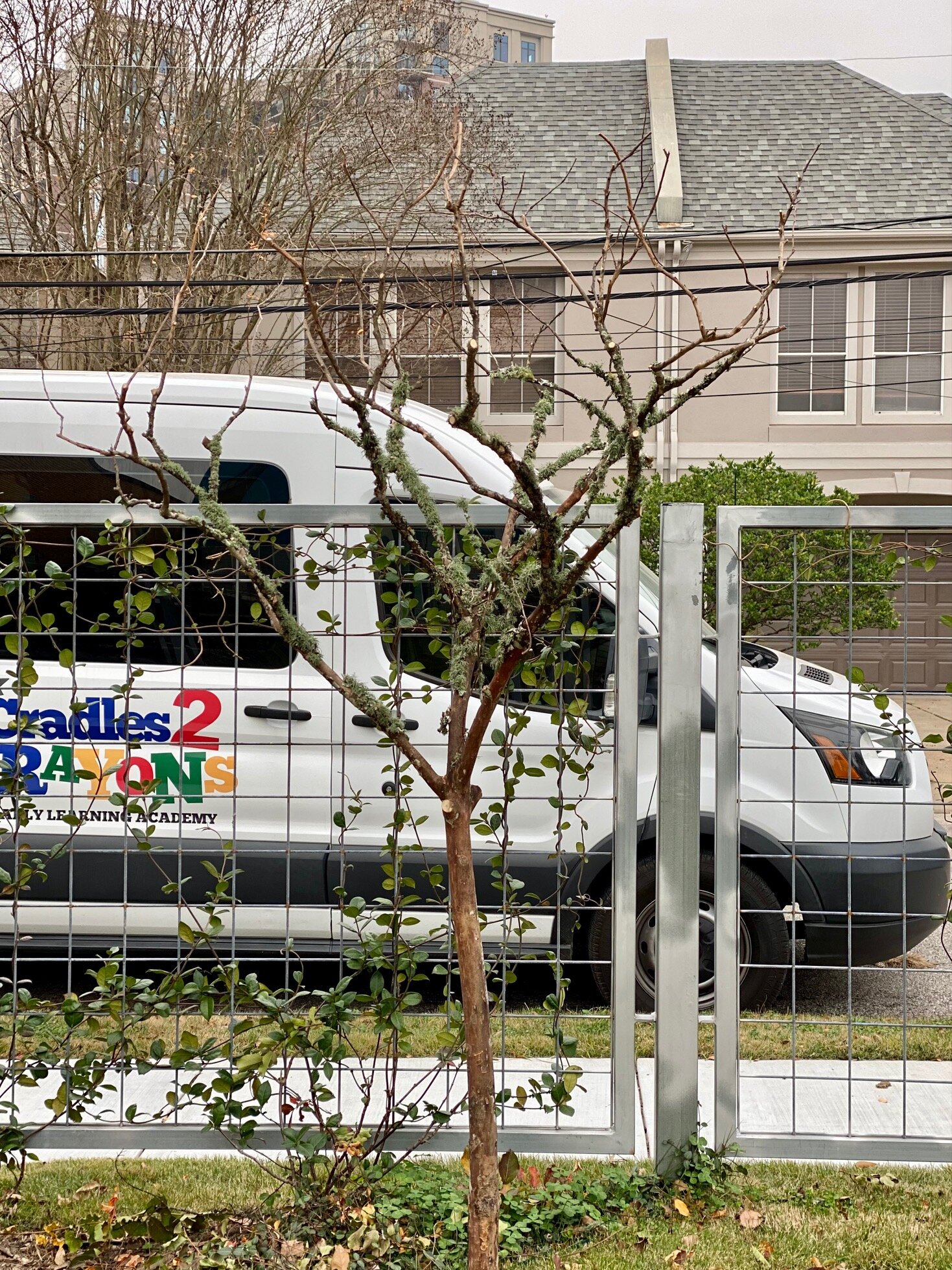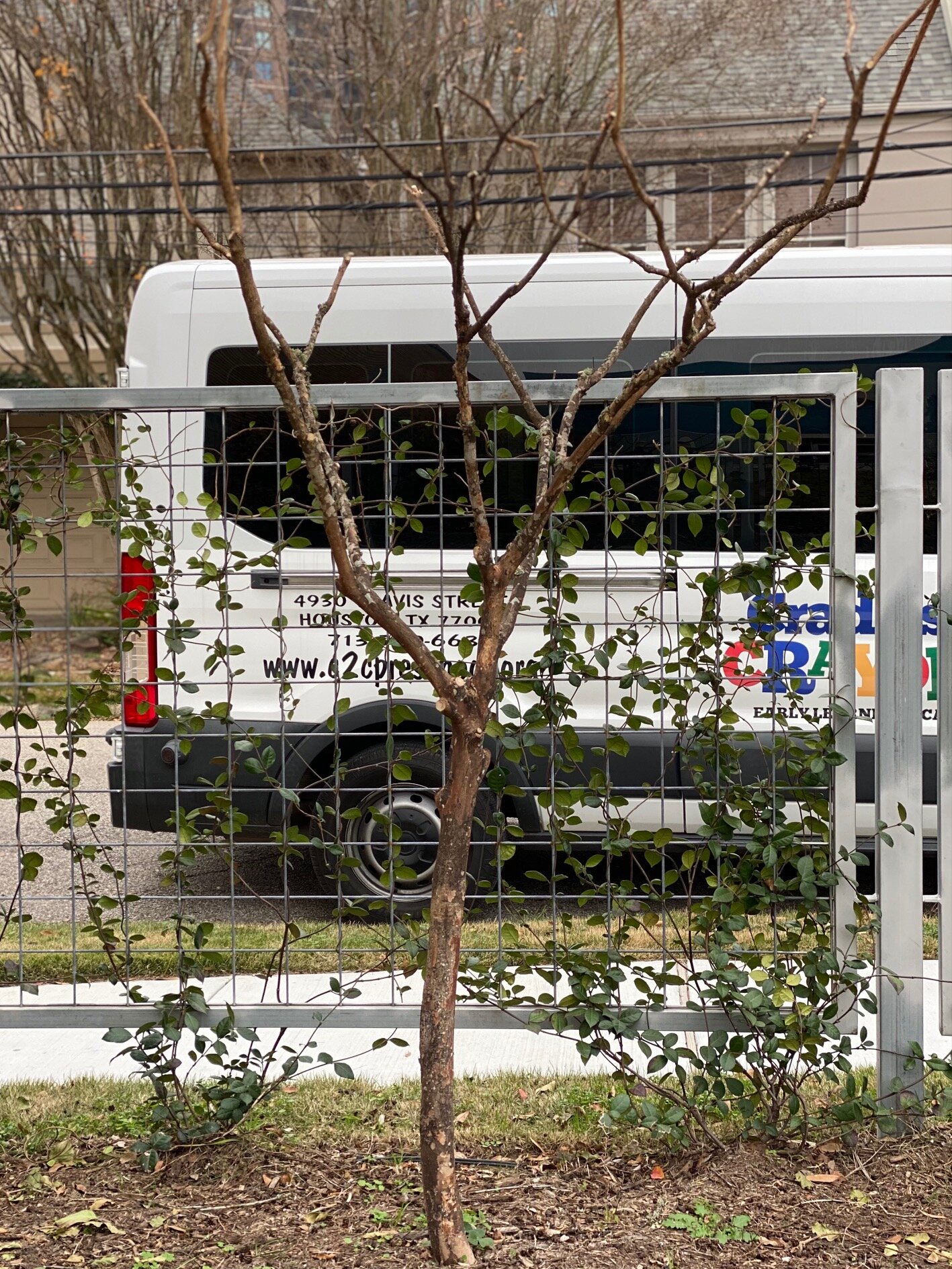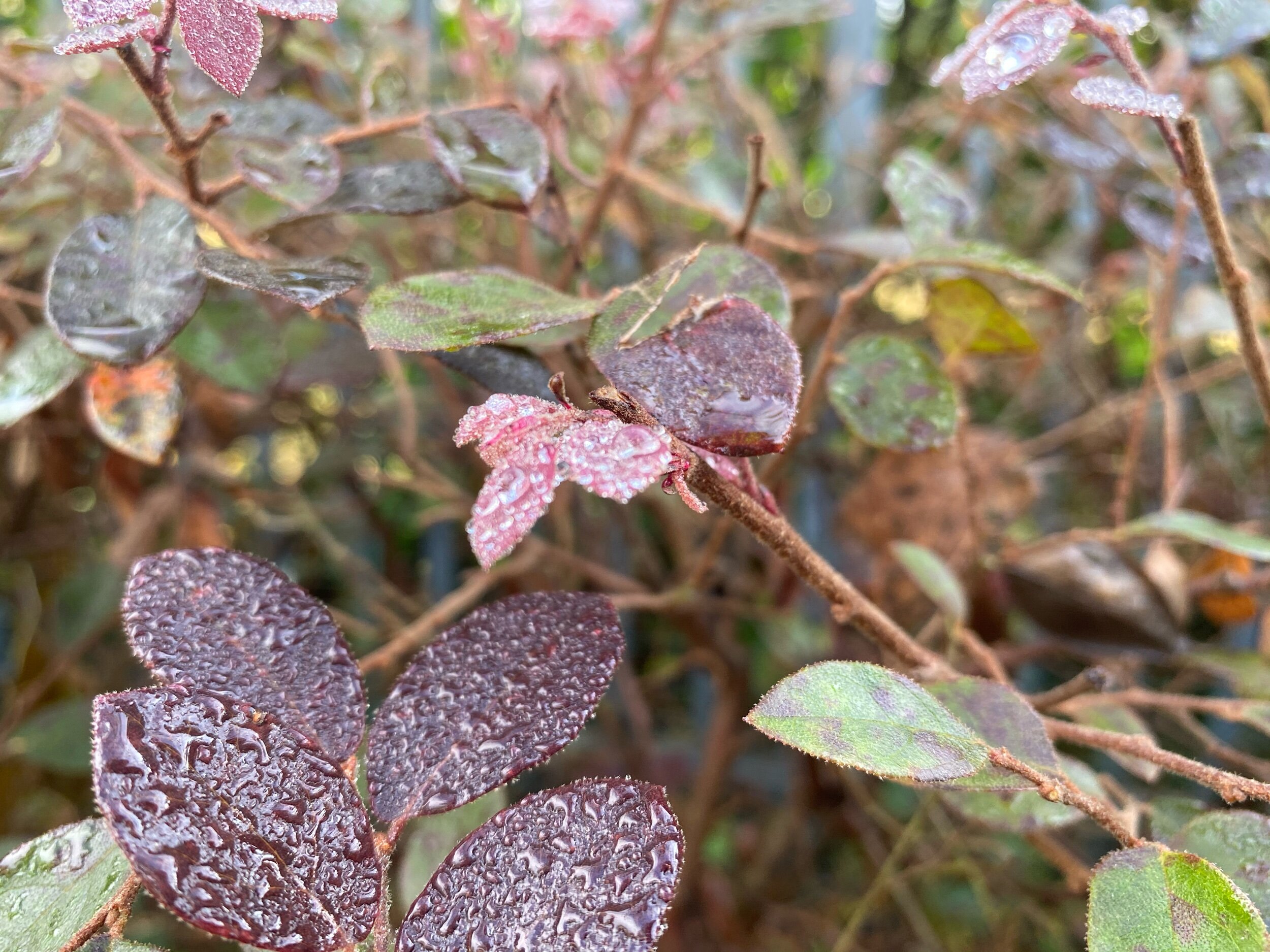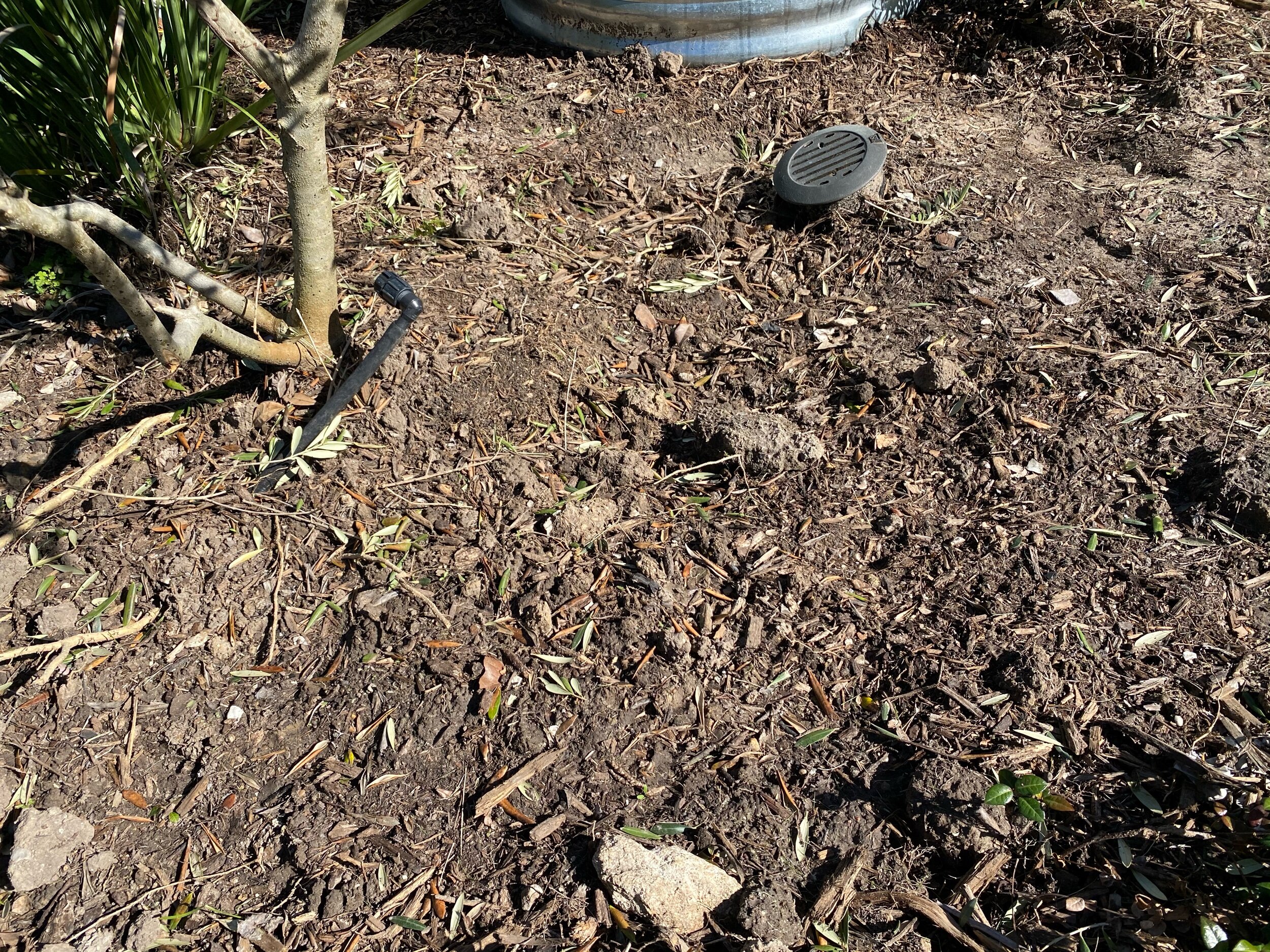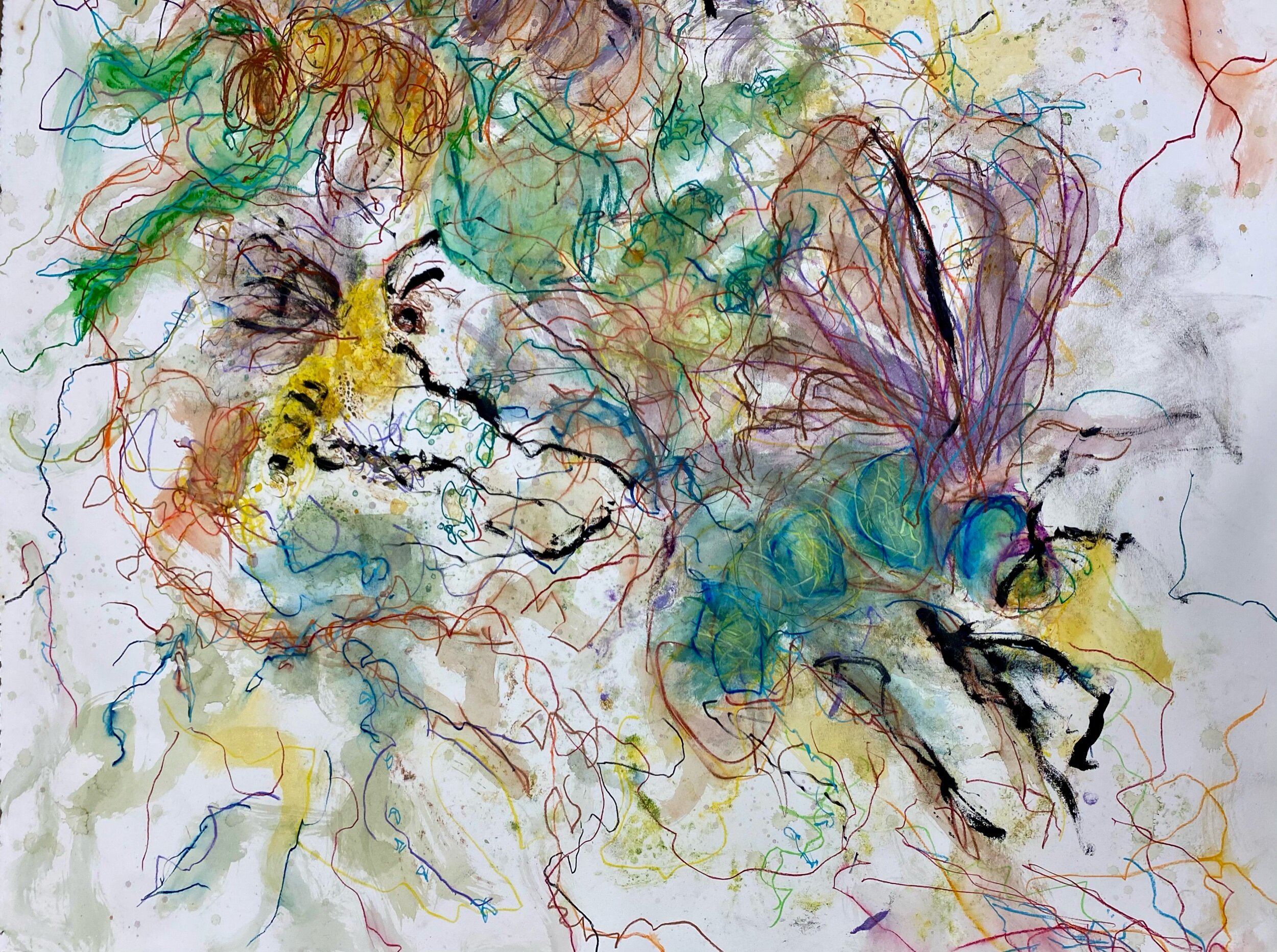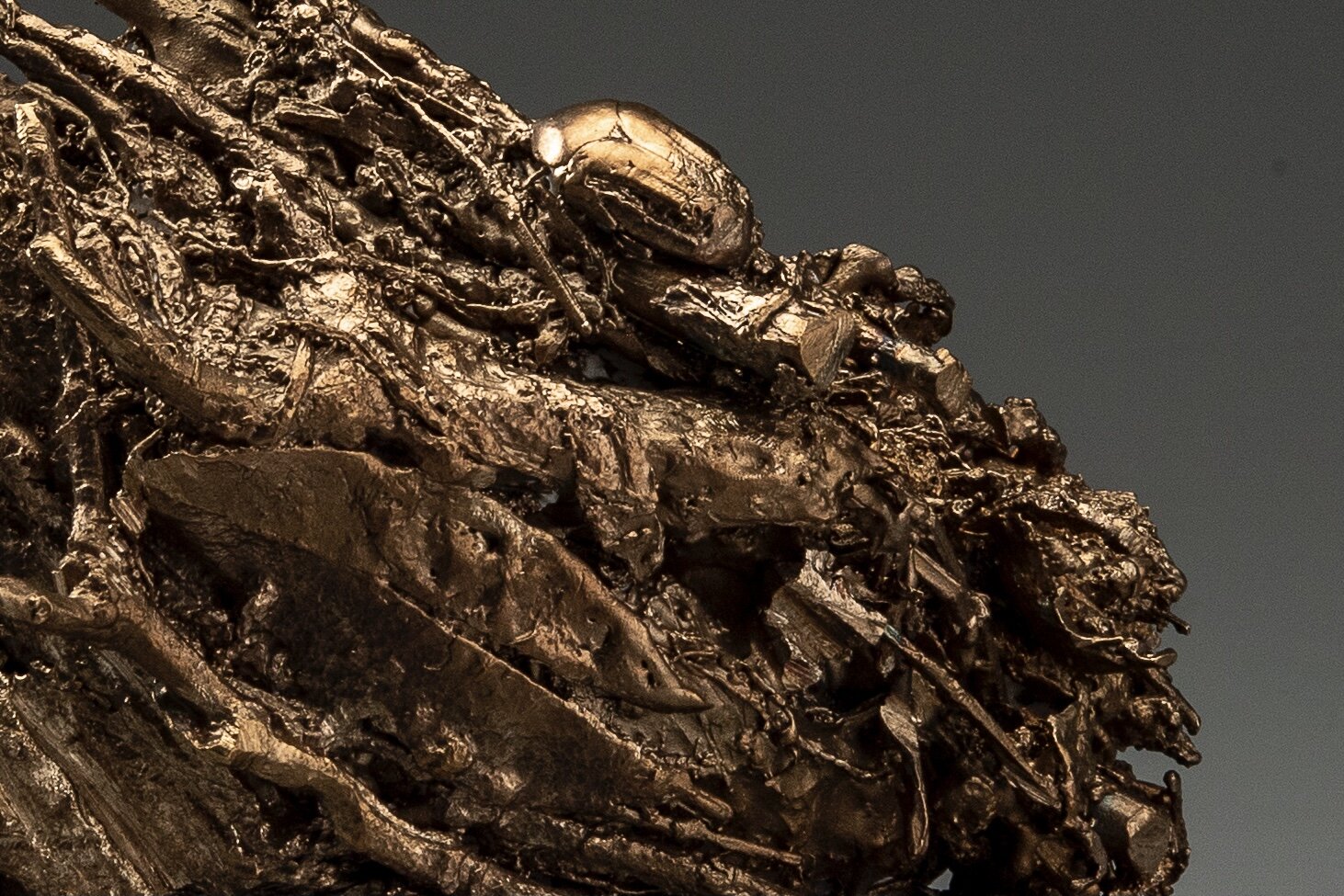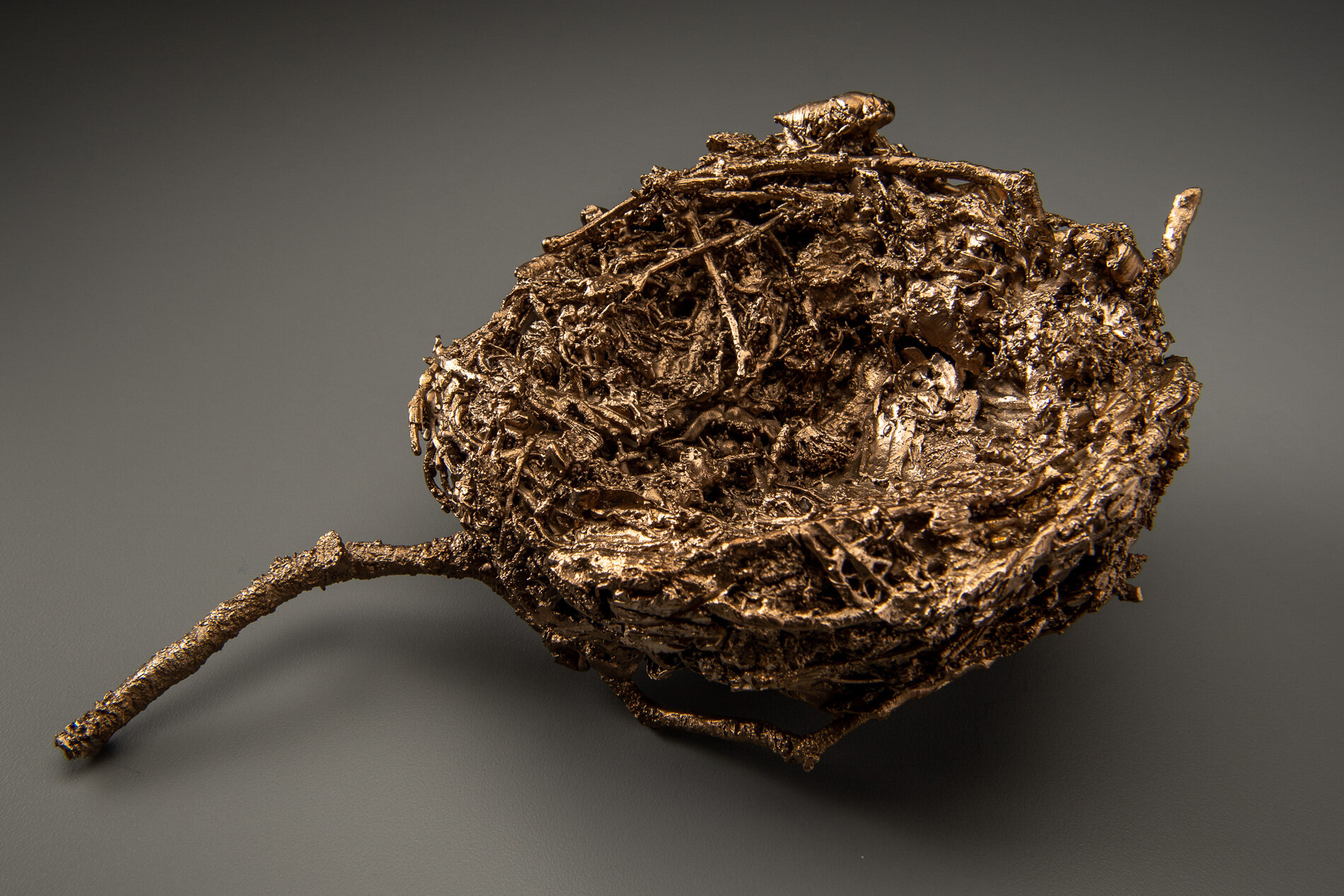I dried some cosmos leaves to us as the coat of a sculpture that is in the works - Endangered knowledge: the Soul of Humus. The piece will be in the #sculpturemonthhouston 2021 exhibit. I started the armature during COVID for the SMH 2020 exhibit, which was postponed. The sculpture looks at the ecological history of the coastal prairie. This texture is perfect #cindeeklementart #endangeredknowledge #coastalprairie #tezasart #houstonart #bioart #environmentalart #cosmos #art #sculpture #bison
THE FIRST INSTALLATION — Immersion Art
—The last thing you see when you leave the Museum. It is worthy of bookend status to a visit to the Museum; a water feature is a holistic system study. Without a water feature, an urban garden can not be chemical-free. It is a critical component for all walks or flights of urban life. The trailer a hole, whole, and holistic is immersion art.
Read moreRoot to Water- when science backs your art -Art that looks at science with a critical eye.
"It is clear that the past offers a vast repertoire of cultural knowledge that we cannot ignore," highlights Professor Boivin.
It is a different way to think of things; however they are on the right root. I have a feeling there will be more areas Root to Water intersects science.
ROOT TO WATER
12” X 18” X 12”
found objects: rusted steel irrigation wheel, root
photo by Nash Bake
Spontaneity and art - a good thing, we will see
I started my day at 6:30 am, pasting images of work into a word document for a curator/art consultant. A necessary task that I was thrilled to do- however, mind-numbing, to say the least. By 12:30 crossed eyed I took the dogs on a walk. When I came across this. My mind numbing was instantly healed with inspirational thoughts.
Seven immaculately bundled trimmings from a neighbors Crape, Myrtle. Crape murdered or not I- the trees were in the backyard, could not see them.
My trimmings from a site-specific installation @Lawndale Center for the Arts. Symbiosis
The image above is from last week at Lawndale (a post in am tardy with) My trimmings are wild and unruly. I am using them on social media to make a point - to change how we landscape- to landscape with habitat for wildlife in mind.
My neighbor's bundles of limbs are in sharp contrast to mine. They are an example of how controlling urban green spaces have become, the tidiness that is expected In our yards.
I am so tempted——— Such a great opportunity to turn these found object organic materials, perfectly assembled tied up with yellow cords into gorilla art. The colors will look amazing at Lawndale. It is not part of my work on Symbiosis to install anything I want. 🤔 The entire dog walk I was haunted by the bundles and their yellow cords. I am not comfortable installing gorilla art but I am excited with the idea and I know Lawndale won’t have me arrested like other institutions might if I randomly installed objects in their sculpture garden, right?
I have always challenged myself to take on the art that scares me the most- to embrace the butterflies as my son tells me. You don’t know until you try. - jump
I went to the door, I was hoping no one was home, Abby was a new neighbor and I introduced myself. - she moved in during Covid. We had a nice chat and she welcomed me to take her piles.
It took two trips
😁 when I bring new materials to Lawndale, I like to photograph them on this turquoise wall- documenting my materials. And I have to say! I love the colors - the Textures.
I declare this installation number 1. Untitled.
This technically is not Lawndale property, the wall is theirs, but the lot is unfortunately not owned by the institution. The lot is vacant. I get all the bundles out so I can pick up load number 2.
Installation number 2
Installation number 3
The yellow ties make my heart sing, that rich brown against the turquoise, and the golden grass softening the base, I am in heaven. I see ballerinas chins up, lined up to take their bows center stage. I had one left.
A painter from last week left their yellow roller- waste not want not. The clippings Are rich on the violet too.
Sometimes I feel guilty that I love my work so much.
Lawndale Art Center - symbiosis
In a nutshell, this is what I hope to achieve with my site-specific piece, Symbiosis.
I am rethinking the uses of yard clippings.
Lawndale - Symbiosis - extractive
In Symbiosis I am stretching my practice and creating a living piece of site-specific art activism that will reimagine a 53.5’ X 48’ traditional urban landscape/sculpture garden and answer the question: how do we holistically restore an ecological balance in Houston? Symbiosis is a collaboration with Lawndale Art Center’s community, neighbors, urban wildlife, and the coastal prairies carbon cycle.
The west border of the garden has five 1 1/2 year old Crepe Myrtle’s a tree famous for murder. The murder refers to badly pruning the tree- down to the knuckles. I was not having these Crape Myrtle’s murdered. Today I used a extractive method of sculpting and clipped- nipped - and cut the existing branches. I shaped the branches/armature of the two end trees.
A sculpture garden has the four seasons of the year and a sculpture garden has the additional change of exhibitions. The pedestals from the last exhibit were still in the garden. 🤔perfect way to highlight the beauty in the wild- the imperfect- the not immaculate urban landscape.
FYI- crepe Myrtle’s are not native however they are a cherished gift to the Art Center. As an optimistic art activist I look at the project holistically to include the desires of the Art Centers board.
When I work in wire, or steele if I cut too much I can always weld it back it add more wire they are forgiving materials. When I clip a branch it is gone- no second chance. .
#artactivism #cindeeklementart #symbiosis #lawndaleartcenter #nativeplants #coastalprairie #sculpture
Create Myrtle cuttings wildly place on a pedestal.
North West Crepe Myrtle after pruning.
Cuttings from two Crepe Myrtle's and the olive trees from a few weeks ago.
South end Crepe Myrtle
The Gift of Crepe Myrtles part 1 — Ready-Mades, Assemblage
Found object — Lagerstromia indica
Size varies 70"– 93" X 49' X 4'
Two of the five Crepe Myrtles on the northwest corner, before I started sculpting Symbiosis, — summer of 2020.
The first thing I did was release the stakes supporting the trees. Just like humans trees become strong from movement, thickening their trunks and stimulating root growth.
The Crepe Myrtles were generously donated to the garden before I started sculpting Symbiosis. Donations are the lifeblood of Lawndale — it is crucial I not clip off that support. Planted in a row on the Travis street side, the treasured trees are the west border of the space next to the fence; they are a significant element of the work, objets trouvés, ready-mades. They anchor, frame and end the assemblage. They are stage left from the parking lot. Many of their characteristics will change every year; they are moving targets, living found objects. I will use them to create the above-ground kinetic components of the sculpture.
detail of the found objects
They are stage left from the parking lot. summer of 2020
There is a symmetry in Symbiosis that balances the needs of the Lawndale Art Center's artists, exhibitions, neighbors, urban wildlife, and the soundscape of urban sculpture gardens. As I prune the Crepe Myrtles, I have to weigh the impact of these elements with every extraction; most features are not physically part of the garden but are part of the whole. Like all sculptures, they have components you can't see; the armature supports everything and the welds that give strength.
The Crepe Myrtles are planted in a row on Travis Street, at the far west end of the garden.
This work requires considerable online research and quiet observations: listening, seeing, and questioning; I continue to learn and observe what wildlife these Lawndale treasures will benefit, symbiotically balancing the needs of the living organism in the heart of the arts district on the Coastal Prairie. What would the arts be without the influence of the natural world?
I took this image through the Crepe Myrtles at the Fall 2020 opening. There was plenty of room for social distancing. It was the first COVID event for Lawndale and for me.
Crepe Myrtles, part 2 — The pruning and trimming is actually the creation of a living sculpture and what that effects are.
Lagerstromia indica —The ways of sculpting symbiotic relationships.
In January of 2021, I shaped the Crepe Myrtles. The living organisms impacted by this creative work are an assemblage of considerations. In holistically sculpting a regenerative site-specific sculpture of living organisms, I have to balance the hierarchy of the living creatures; with every cut, I ask how it will impact the whole?
Golden-eye Lichens - Teloschistes chrysophthalmus- Native to the United Kingdom these lichens survive in harsh environments where algae cannot normally survive. Lichens enable algae to live all over the world. They also provide a means to convert carbon dioxide in the atmosphere into oxygen. I found two small patches on one of the Lawndale Crepe Myrtle’s. I took this before the Texas freeze. It survived but is now struggling. Lichens only grow on Crepe Myrtle’s that are struggling, but they do not harm the Crepe Myrtle’s. I am hunting for more information about the relationship between the lichens and the Crepe Myrtle’s.
Cutting-clipping-chopping, I work to balance and enhance four features; make them aesthetically attractive, shape the Crepe Myrtle branches to benefit the birds, the neighboring community, pollinators and other metropolitan creatures underserved an unknown. I researched how landscapers recommend you prune Crepe Myrtles. I did not want to Crepe Murder them.
Extraction
LOCAL CRIME SCENES
EVIDENCE OF THE COPYCAT MURDERS PLAGUING HOUSTON’S WILDLIFE HABITATS.
I also questioned past practices developed without considering the impact on nature. Landscapers recommend cutting away all horizontal branches for human visual pleasure. That gave me pause—without any horizontal elements, how do birds and squirrels support their nests? I started looking around at birds' nests, something I do all of the time anyway. I observe birds building their nest in protected areas of trees where many cross branches stabilize their nests and protect from wind, sun, and predators.
BIRDS NESTS, PROTECTED FROM WIND, AND SUN BY A WEB OF TREE BRANCHES, AND
HIGH IN THE TREES, SAFE FROM PREDATORS ATTACKING FROM ABOVE.
BIRDS NESTS, PROTECTED FROM WIND, AND SUN BY A WEB OF TREE BRANCHES, AND
HIGH IN THE TREES, SAFE FROM PREDATORS ATTACKING FROM ABOVE.
Left- high in the neighboring Crepe Myrtle is a nest.. RIGHT- A close-up showing how much protection the web of limbs provides for the nest.
If I were only shaping the trees for the birds, I would not cut a twig. For the neighbors walking on the sidewalk, I used the sculpting method of extraction to remove all branches poking out of the fence under 6 feet.
A Neighbor walking along Travis Street. In the future, the white Crepe Myrtles will canopy the sidewalk and provide a shaded path.
On the fence's museum side, I pruned the trees high off the ground as the flowering natives we plant beneath them will need lots of sunshine to support various pollinators. I managed to create a few nooks and Ys where limbs came together. Next year, the trees should be tall enough to provide lots of safe branches for birds to perch on that will stretch high over the sidewalk and shade the neighbors.
I picture a row of clouds spun like cotton candy out of white Crepe Myrtles blooms arching over the fence protecting those strolling from their townhouses to the museums, hiding powerlines from view. — time will twll.
The trees limbs are the armature for several components of the assemblage.
Subterraneous Secrets - how plant roots communicate with microorganisms
Lawndale symbiosis - milkweed and monarchs
I have read that a few migratory monarchs spend the winter in the Houston area and join a small resident population of monarchs. I have also read that it is essential to choose native milkweed as opposed to tropical. Tropical milkweed—doesn’t die back in the winter as native milkweed does. When a place to lay their eggs year-round is available, many monarchs don’t bother making the trip to Mexico.. I saw this caterpillar on my morning walk. It was seriously munching on the milkweed. Milkweed is the only plant that provides the nourishment that will transform the caterpillar into a monarch butterfly. It is important to plant only none-hybrid native milkweed. Texas milkweed will be included in my 2021 Lawndale Art Center Sculpture garden piece Symbiosis. In Symbiosis, I am stretching my practice and creating a living piece of site-specific art activism that will reimagine a 53.5’ X 48’ traditional urban landscape/sculpture garden and answer the question: how do we holistically restore an ecological balance in Houston? Symbols is a collaboration with Lawndale Art Center’s community, neighbors, urban wildlife, and the coastal prairies' carbon cycle. For more details see this link.
#carboncycle #cindeeklementart #texasart #houstonart #contemporaryart #modernart #caterpillar #monarch #milkweed #nativeplants #migration #energy #movement
#lawndaleartcenter #symbiosis #artactivism
The day after the caterpillar sighting.
The beauty of a leaf runs deep.
How beautiful droplets of dew or rainwater puddle on the waxy leaf surfaces? They provide the watering holes for nature’s tiniest creatures.🐞🐛🕸️🦎🐌🐸🐜🦋🐝
What do you see when you see a leaf? ☘️🌿🌱🍀
I see a unique natural system. Leaves multi-functioning as micro reservoirs, coats of armor protecting the soil, and micro floodgates slowing rainwater. 💦🌊💧
On the Coastal prairie, leaves function to protect the soil from being compacted by the pelting raindrops. If the heavy raindrops fall is not broken by layers of leaves and organic matter, the tiny cavities in living soil collapse, and rainwater moves horizontally across our landscape instead of into the tiny reservoirs in the soil. We need these small cavities to allow water to penetrate deep into the soil. Leaves also slow rain droplets giving the soil time to transport the rain to its deepest roots. Once the rain is in the ground cooling our planet leaves protect the soil from the heat of the day. This multilayered ground cover gives rain more time to trickle into the aquifer. Purifying our water and cooling our planet. How amazing are leaves? As an artist my how we see urban landscapes
My work records endangered knowledge to the collective memory and reimagines urban landscapes to holistically balance the needs of humanity and wildlife.
In Symbiosis I am stretching my practice and creating a living piece of site-specific art activism that will reimagine a 53.5’ X 48’ traditional urban landscape/sculpture garden and answer the question: how do we holistically restore an ecological balance in Houston? Symbiosis is a collaboration with Lawndale Art Center’s community, neighbors, urban wildlife, and the coastal prairies carbon cycle. #symbiosis #lawndaleartcenter #urbanlandscapes #artadia #coastalprairie #water #leaves #conservation art #bioart #nature #contemporaryart #modernart #artactivism #cindeeklementart #texasart #houstonart
Grasslands vs. trees
When it comes to the environment in the 21st century grasslands beat trees when it comes to carbon sequestration. Our planet is a living breathing organism, impacted by our actions, always changing. I believe It is important that we constantly observe and evaluate how it changes as humans developed and expand across it.
Trees are a thing of beauty but they store carbon above ground in their trunks and limbs.when they catch on fire the trunks and limbs release their carbon into the atmosphere. Grasslands storing carbon underground release little carbon when they catch on fire. In addition the grasslands are a giant sponge soaking up water that prevents dryness and fires.
With the forest fires we have suffered world wide it is time to plant more grasslands and turn these areas suffer ending from droughts into giant sponges for soaking up water and carbon. When the ground is moist then we can can start adding back trees.
Drying coastal prairie native grass in my studio.
I felt like Sally Fields
I feel like Sally Fields at the end of her A Awards acceptance speech- anyone my ages remembers how funny that was. I always think of Sall F. When I think of being grateful when I get any positive feed back for my art.
This has to be my most liked Instagram post. That should tell me something. I guess I will be officially finding a way to combine Rumblings and the World of Hum. 🤔🤠🐝
Why Houston is in the perfect position to save the bee
Rural areas are highly impacted by the unanticipated consequences of our industrial agriculture’s dependence on chemicals that weaken bee’s immune systems. Urban bee populations can be more diverse than in rural areas. Researchers are finding in cities such as Chicago, Berlin, Berkley, and Melbourne that have reimagined their parks, neighborhoods, city centers, vacant lots, street medians, and rooftops planted with native flowers, grasses, and fruit, and vegetables support healthy, vibrant wild native bee populations.
In the US, there are four thousand native bee species. They pollinate over three hundred times more effectively than honey bees. For example, A single female Leafcutter Bee visits 100,000 plus blossoms per day whereas a honey bee visits 50-1000.
Houston covers 600 square miles of land and has one of the longest growing seasons in the U.S. As it continues to sprawl across Texas, its gardens must increasingly become a refuge for native plants and animals. With 2.3 million people living in the most vital economic, cultural center of the south, we can become the most critical urban native bee habitat in the United States.
I have spent the last year and a half studying the bee situation as it pertains to my art and my interest in regenerative agriculture. I am determined to take this knowledge and save the bee in urban settings.
With Houston's land size, population, and location in the Sunbelt like it or not-we are impacting the bee population.
ADDITIONAL LINKS
If Cuba can create urban gardens to feed its poor can you imagine what we can do
Symbiosis building soil life.
How do you build soil health without having the luxury of animal impact. It is one thing to build soil health on a bison farm. The microbes in the the the bison, turkey, pig and chicken dung builds the life in the soil. In the sculpture garden at Lawndale I am going to use LEAF MOLD COMPOST. This product is produced primarily from recycled leaves, with a little grass and horse manure mixed in, a touch of fruits and vegetables. After a long slow compost it will be rich in beneficial microbes. It will help save water and promote healthy soil. I was going to wait until early spring before we replanted the garden. However, Sunday Lawndale is having it's Sunday brunch fund raiser. And this is in the day if Covid 19 so the event is outside. I noticed that the heavy rains of late have compacted several areas in the beds and washed away some soil. It will be an opportunity to to talk about living soil,
I spent time researching different types of compost and mulch. Natures Way Resources compost native plants, is locally owned and located in the Houston area. The owner is a soil scientist. I had a long conversation with him today and he really knows living soil. I can't wait to see life return to the garden.
Here you can see how the soil is wearing away without having plants/roots hold it down. You can also see how the rain hitting it had compacted the ground. When the soil becomes compacted it stops absorbing water. .
The goods
The tools
Shoutout HTX
Anytime an organization or individual takes notice of my work it is a gift. Thank you Shoutout HTX for supporting me and other local artists.
Army Corps of Engineers study
The Army Corps of Engineers study to reduce flooding risk does not consider utilizing any nature-based solutions. Here is a fascinating discussion of nature-based solutions that will not cost $1 -$12 billion.
“How fleeting are the wishes and efforts of man! How short his time! and consequently how poor will his products be, compared with those accumulated by Nature during whole geological periods.”
—Charles Darwin, Origin of the Species
I was already working on this piece and the artist/activist/conservationist statement that it visually supports. I am excited to get it photographed and out to the public. There is no question that Charles Darwin had it right. Before we spend $12 billion and wreck the Katy Prairie and Buffalo Bayou let’s review a study by bioengineeers.
”We see nothing of these slow changes in progress, until the hand of time has marked the long lapse of ages”-Darwin
Darwin’s observance is no longer correct, As we continue to expand our cities we have have ramped up the hand of time, we are fast-forwarding and witnessing evolution. This can be good or it can be bad. Millions of species going extinct on our watch is not good; there is a benefit to seeing the effect of our actions. This knowledge is power, join me and decide to change the way we see urban environnents, and act accordingly. We can write our own evolutionary script. We can return to protecting natures .
Reimagining urban landscapes- how plants and animals are evolving in cities.is an eye-opener.
World of Hum- a humdinger
Keystones in El Paso
50” x 10’
watercolor monotype
Same Time Next Year
Detail of common beetle from my urban Explorations.
The sidewalks in my neighborhood are my nature trail. I walk with my eyes on the prowl for intriguing insects, exoskeletons, insect wings, feathers, dried flowers, twigs, leaves, seeds, and pods — things my children’s eyes taught me to find during our walks together over the years. Since 2013, these biological mementos have found their way into my bronze work in the molds of nests. Each piece is a reflection of that year’s ecology and records the time and movement of environmental restoration. Initially, I was unaware of the landscape around me, but as my art dove deeper into environmental restoration and Hurricane Harvey changed our city, I realized that my days are, in fact, full of sterile surfaces. With COVID-19 quarantine, children in my neighborhood started venturing outside and looking for things to capture their curiosity. Delighted with their new interest, I realized that the green spaces and puddles children explore now are no longer filled with a diversity of life; the box turtles, bullfrogs, tadpoles, bumblebees, and assortments of flitting insects have evaporated with the spray of insecticides and herbicides in our neighborhoods. The selection is reduced to cicadas, the common beetle, honeybees, a rare native bee, and an abundance of Cuban lizards that dwell in turf grasses, boxwoods, crepe myrtles and oaks. I have awakened to cultural landscape uniformity. COVID has changed how I see the need for perfect lawns; the dirty truth is mosquito home-misting machines, obsessive weed control, artificial turf and a lack of plant diversity have turned urban neighborhoods into manicured monocultures for humans exploring video games. These habitat changes in massive population centers are fast-forwarding evolution: loss of wildlife habitat is one of the biggest threats facing many animal species. This does not have to be—it is a societal choice, the ability to speed up evolution can go both ways. Through my works – Lawndale’s Symbiosis, Endangered Knowledge: The Soul of Humus, Gust, World of Hum, Rumblings and Root to Water—I am committed to creating work that educates and helps communities change how we landscape our cities to include valuing the natural world and turning back the evolution. In Dirt to Soil, Gabe Brown quotes Don Campbell, “If you want to make small changes, change how you do things, if you want to make big changes change how you see.” When I come across intriguing flora or fauna on my urban trail, albeit few and far between, I see them as evidence that can inspire a revolution in the landscape. If they are expired and will not decompose, I collect them. I see these bronze cast nests as urban wildlife fossils—biographies, every year a chapter recording Houston's environmental awakening. As an optimist—environmental—art—activist my work focuses on revealing endangered knowledge to change how we see urban landscapes and activate cooling the planet through our cityscapes. As migratory birds return year after year to build nests and raise their young, I return with optimism in my step. I envision witnessing the return of four hundred plus butterfly species and eight hundred bee species native to Texas. I can see this returned wildlife capturing my future grandkids' imaginations. I will tell them the story of how insects almost disappeared and how every yard is a micro-ecosystem and matters. I imagine their hands building nests with a diversity that I cannot imagine. I hear their voices telling me in one breath about the fuzziest-biggest bee they ever saw, covered in golden dust nesting in a patch of ground beneath the sunflowers not far from the silverleaf nightshade. I see them bringing me a tail-feather from a Red Shoulder Hawk and asking, "what does it hunt" and is it the bird that sounds like the squirrel's screech. After a rain, I see them finding two bullfrogs attached and their tiny ribbons of floating eggs in a pond. I hear them tell me not to touch the caterpillar of the southern flannel moth, and asking me, “how does it sting?”. At the low of evening when dragonflies hover; I will watch as they study the night heron’s quiet solitary stance as it stalks small citizens of the grass, I will smile as they question the raucous warnings of ravens and the scoldings of nut collecting squirrels. I will feel their excitement when neighborhood raccoons appear from storm sewers and scavenge treats from dog bowls and opossums waddle fence lines, searching out grubs and open garage doors. I will follow their eyes when the silent patrol of the lone coyote visits the shadows of our boulevards from their bayou bound dens. I let them sleep outside and hear their heavy eye lids ask, why do the owls ask who? I listen as they wake up to a concert of white-winged doves. I will feel peace when they are wise to nature.
SAME TIME NEXT YEAR 2019
4.75” X 10” X 5.5”
bronze
SAME TIME NEXT YEAR 2018
5” X 9” X 7.5”
bronze
photo by N. Baker
SAME TIME NEXT YEAR 2017
4" X 13" X 8"
bronze
photo by Nash Baker

